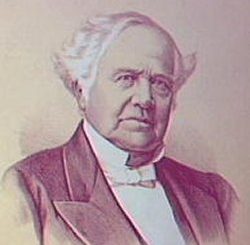Courtiers House
On 7 June 1799, twenty nine year old Mrs Sarah Fletcher committed suicide at Courtiers. She hung herself from the curtain rails of her four-poster bed using a handkerchief and a piece of cord. It is said that she was driven to take her own life after she discovered her husband, who was a Captain in the Royal Navy was arranging a bigamous marriage to a wealthy heiress. This, after she had received word that he had died at sea. She went to the church and actually stopped the wedding from taking place. Following this, Captain Fletcher returned to sea, but the betrayal and neglect was too much for Sarah to bear.
 The reason for her death was recorded as lunacy. Jacksons Oxford Journal for Saturday 15th June 1799 states: ‘the derangement of her mind appearing very evident, as well as from many other circumstances, the jury, without hesitation, found the verdict – Lunacy’. A similar account also appeared in the Gentlemen’s Magazine. By this time her husband was said to be en-route to the East Indies.
The reason for her death was recorded as lunacy. Jacksons Oxford Journal for Saturday 15th June 1799 states: ‘the derangement of her mind appearing very evident, as well as from many other circumstances, the jury, without hesitation, found the verdict – Lunacy’. A similar account also appeared in the Gentlemen’s Magazine. By this time her husband was said to be en-route to the East Indies.
She is buried in the Abbey Church of St Peter & St Paul, Dorchester-on-Thames, but her ghost is said to haunt her former marital home. Courtiers House is a red-brick Georgian mansion which became a boarding school many years after Sarah’s death. When the school closed it was divided up into cottages and then eventually became an institution for girls.
The haunting would manifest in various ways and was experienced by many people, including the school masters and children residing there. The school, which was a private academy opened in 1846 and was referred to as Crakes School after it’s master and it is said that he took over the building because it had a low rent of twenty pounds per annum which may have been due to its neglected state and reputation of being haunted. The stables and coach hose were made into dormitories for the boys. Around 1854, the children were amongst those who witnessed the haunting. Later in the 1850’s it became a commercial school which had thirty pupils. By 1866 it was referred to as a grammar school. The school moved from Courtiers in 1868 after a fever outbreak in Clifton Hampden.
Sarah would appear wearing a black (possibly silk) cloak and with a blue or purple ribbon in her auburn hair. Usually the most common aspect of the haunting was the sound of footsteps and the feeling of her presence. The footsteps would come out of the room which used to be her bedroom (situated on the top floor), go along the passage and down the stairs.
The boys staying at the school would also hear footsteps as an invisible person would enter their room, walk around a little, then leave.
There were instances of doors opening and slamming. Door handles being seen to move on their own and noises could be heard throughout the building as if things were being picked up and dropped.
Maude Ffoulkes mentions the haunting in True Ghost Stories (1936) which she co-authored with Marchioness Townsend and Jessie Middleton quotes Ffoulkes in her account of the story ‘Sarah Fletcher’. Ffoulkes visited Courtiers House in the early twentieth century when it was a girl’s institution and wrote a pamphlet called ‘The Story of Sarah Fletcher’ (1913) after looking into the haunting. It included testimonies from Rev Poyntz, minister of Abbey Church at the time and Rev Edward Crake, who had lived at Courtiers as a child.
The epitaph on Sarah’s grave reads:
‘May her Soul meet that Peace in Heaven which this Earth has denied her’




Recent Comments